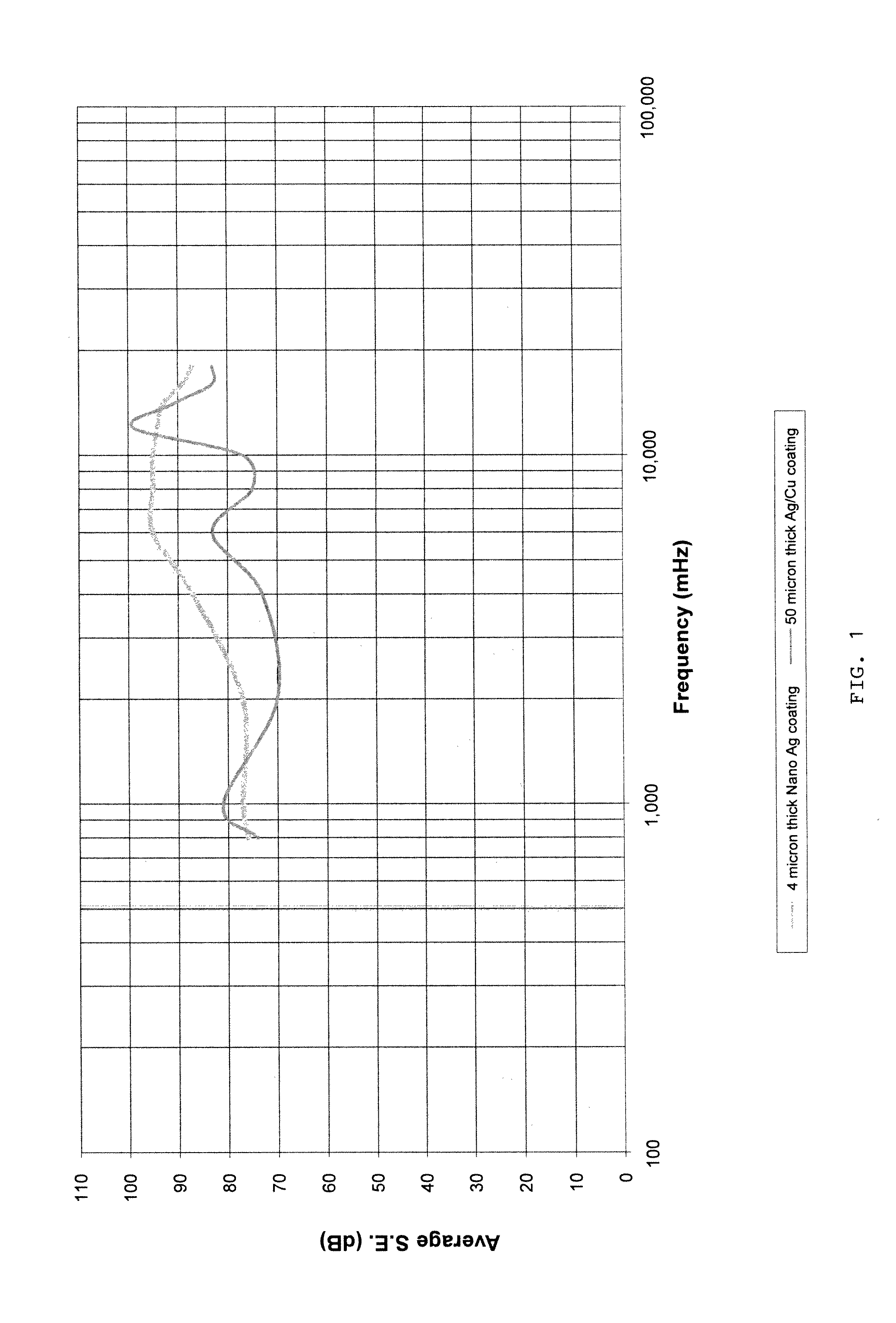NANO coating for EMI gaskets
a gasket and nano coating technology, applied in the field of nanoparticles, can solve the problems of electromagnetic radiation passage, adversely affecting the performance of an electronic circuit, and causing electromagnetic interferen
- Summary
- Abstract
- Description
- Claims
- Application Information
AI Technical Summary
Benefits of technology
Problems solved by technology
Method used
Image
Examples
examples
[0044]A conductive nanoparticle ink formulation was obtained from PChem Associates. The ink, designated as PF1200, is an aqueous formulation containing spherical silver nanoparticles having a nominal size of about 15 mm.
[0045]A gasket was coated with the ink using a dip coating process to form a continuous coating over the gasket. A similar gasket was coated with a conventional silver / copper coating. The results are shown in FIG. 1 for comparison wherein the shielding effectiveness is plotted against frequency for each coating.
PUM
| Property | Measurement | Unit |
|---|---|---|
| thickness | aaaaa | aaaaa |
| thickness | aaaaa | aaaaa |
| sizes | aaaaa | aaaaa |
Abstract
Description
Claims
Application Information
 Login to View More
Login to View More - R&D
- Intellectual Property
- Life Sciences
- Materials
- Tech Scout
- Unparalleled Data Quality
- Higher Quality Content
- 60% Fewer Hallucinations
Browse by: Latest US Patents, China's latest patents, Technical Efficacy Thesaurus, Application Domain, Technology Topic, Popular Technical Reports.
© 2025 PatSnap. All rights reserved.Legal|Privacy policy|Modern Slavery Act Transparency Statement|Sitemap|About US| Contact US: help@patsnap.com

